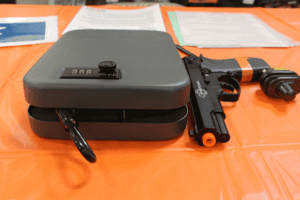
Three Interventions to Address Firearm Injury and Death

Amidst the rise of infections and deaths from COVID-19 in the United States, many other health issues have been overshadowed. However, the problem of firearm injuries and deaths has continued.
In a new Viewpoint published in JAMA on January 8, 2021, researchers at the Harborview Injury Prevention & Research Center (HIPRC) and the Department of Pediatrics of the University of Washington School of Medicine, the Department of Epidemiology of the University of Washington School of Public Health, and the University of Alabama School of Law discuss three interventions that may reduce the risk of firearm-related injury and deaths.
Currently Washington is the only state in which these three interventions are available:
“These interventions can potentially allow physicians and other clinicians to decrease the risk of firearm injuries and death to their patients,” says lead researcher Frederick, Rivara, MD, MPH, Director of the Firearm Injury and Policy Research Program (FIPRP) , and core faculty of the Harborview Injury Prevention and Research Center.
Mapping locations with temporary firearm store is a solution for families with a household member experiencing a mental health Crisis. Colorado and Washington are the only states which have created interactive maps showing law enforcement agencies, gun stores, and shooting ranges which are willing to temporarily store firearms.
Voluntary Do-Not-Sell Lists are laws that allow individuals to voluntarily and confidentially restrict their own ability to purchase firearms.
ERPOs provide a judicial process to restrict purchasing and possessing of firearms by individuals who exhibit behaviors that indicate they are at extreme risk of harming themselves, others, or both.
“By having these interventions available to doctors and other clinicians, they present opportunities which could help lower the risks of firearm injuries and deaths,” Rivara says.
Authors in this commentary say all three of these interventions respect the rights of individuals to possess firearms. The three topics have a strong potential to make a difference in reducing firearm-related deaths and injuries.
Other authors include, Firearm Injury & Policy Research Program (FIPRP) Co-Director Ali Rowhani-Rahbar, MD, MPH, PhD and Frederick E. Vars, JD, the Ira Drayton Pruitt, Sr. Professor of Law, University of Alabama, School of Law.